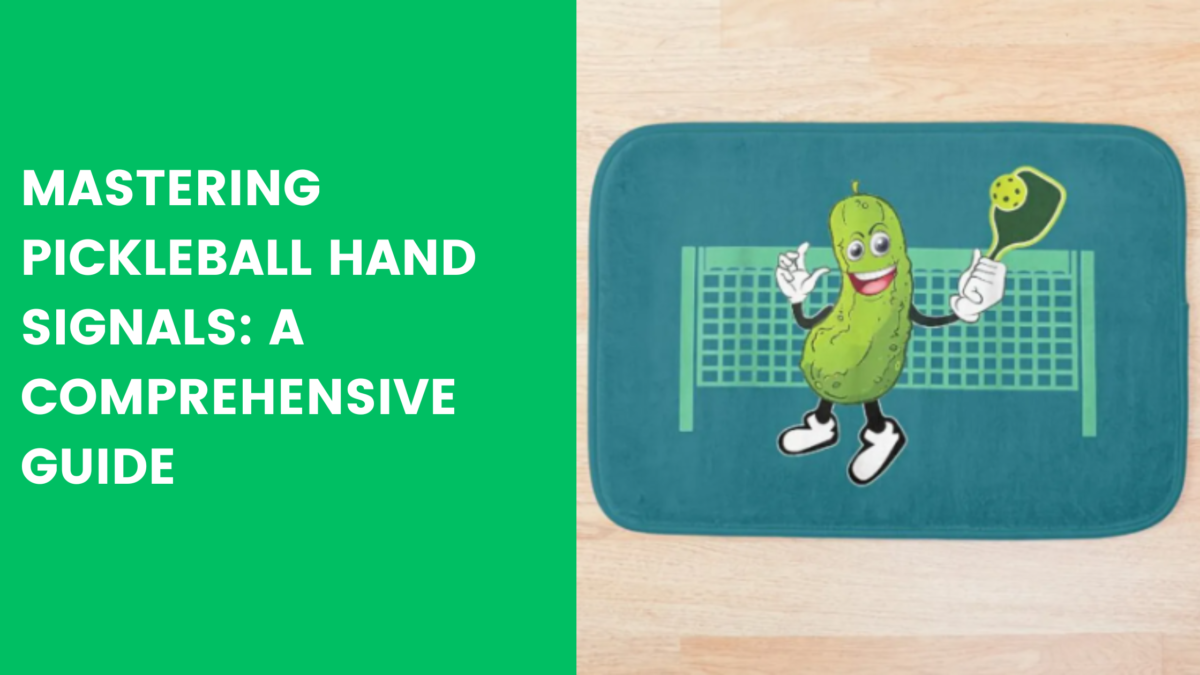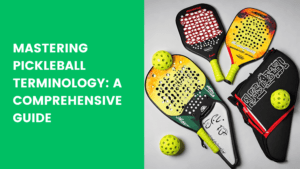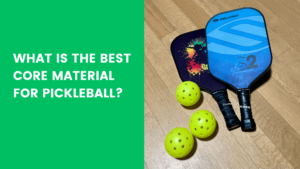Have you ever watched a pickleball match and wondered how players communicate so seamlessly without speaking? The secret lies in their mastery of hand signals. These subtle gestures are the unsung heroes of the pickleball court, allowing players to coordinate strategies, indicate scores, and maintain the flow of the game without uttering a word. Here is a A Comprehensive Guide of Mastering Pickleball Hand Signals.
The Importance of Non-Verbal Communication in Pickleball
In the fast-paced world of pickleball, every second counts. Verbal communication can be slow, distracting, and sometimes impossible in noisy environments. That’s where hand signals come in, providing a quick and efficient way to convey information. They’re not just convenient; they’re essential for maintaining the rhythm and spirit of the game.
Basic Pickleball Hand Signals
Let’s start with the fundamentals. These are the signals you’ll use in almost every game, whether you’re a beginner or a seasoned pro.
Serving Signals
Ready to Serve
Before serving, it’s crucial to ensure that both you and your opponents are ready. The universal signal for “I’m ready to serve” is holding the ball up at eye level. It’s simple, clear, and gets the job done without any fuss.
Not Ready to Receive
On the receiving end, you might need a moment to tie your shoe or adjust your grip. To signal that you’re not ready, simply hold up your non-paddle hand, palm facing the server. It’s like a friendly “hold on a sec” gesture that keeps everyone on the same page.
Scoring Signals
Point Indication
In pickleball, keeping track of the score is everyone’s responsibility. To indicate the score, players use their fingers. For example, if the score is 4-2-1, the server would hold up 4 fingers, then 2 fingers, and finally 1 finger. It’s like a little dance of digits that keeps everyone informed.
Side Out
When it’s time for the serve to switch sides, players use the “side out” signal. This involves a sweeping motion with the arm, pointing towards the team that will now be serving. Think of it as directing traffic on the court – you’re guiding the action to the other side.
Advanced Pickleball Hand Signals
Once you’ve got the basics down, it’s time to level up your signaling game. These advanced signals can give you a competitive edge and improve your team’s coordination.
Position Changes
Switch Sides
Sometimes, you and your partner might want to swap positions. The signal for this is typically a circular motion with your paddle hand. It’s like you’re stirring up the court, mixing things up to keep your opponents on their toes.
Stay Put
Conversely, there might be times when you want your partner to maintain their position. For this, a quick palm-down gesture, like you’re patting an invisible dog, does the trick. It’s a calming signal that says, “Everything’s good where you are.”
Strategic Signals
Poach
Poaching is when a player moves across to hit a ball intended for their partner. To signal your intention to poach, you might tap your chest with your free hand. It’s like saying, “I’ve got this one” without opening your mouth.
Fake
Sometimes, the best strategy is to make your opponents think you’re going to do something you’re not. The fake signal, often a quick wink or a subtle nod, lets your partner know that you’re about to pull a fast one on your opponents.
Etiquette and Best Practices for Using Hand Signals
Like any aspect of pickleball, there’s an etiquette to using hand signals. It’s not just about knowing the signals; it’s about using them effectively and respectfully.
When to Use Hand Signals
Hand signals are most effective when used sparingly and at the right moments. Overusing them can be distracting and might even give away your strategy to observant opponents. Use them when they’re necessary for coordination or score keeping, but don’t turn your game into a silent movie.
Avoiding Confusion with Opponents
Remember, the goal of hand signals is to improve communication, not to confuse or mislead your opponents. Make sure your signals are clear and consistent. If you’re using a unique signal that’s not widely known, it’s good sportsmanship to explain it to your opponents before the game starts.
Common Mistakes in Pickleball Hand Signals
Even the pros sometimes fumble with their signals. Let’s look at some common pitfalls to avoid.
Inconsistent Signaling
Consistency is key when it comes to hand signals. If you use different signals to mean the same thing, you’re likely to confuse your partner and yourself. Stick to a set of signals and use them consistently throughout the game.
Overcomplicated Gestures
Remember, the beauty of hand signals lies in their simplicity. If you find yourself performing elaborate charades on the court, you might be overdoing it. Keep your signals clear, concise, and easy to interpret at a glance.
Improving Your Hand Signal Game
Like any skill in pickleball, your use of hand signals can be improved with practice and intention.
Practice Drills for Better Communication
Why not incorporate hand signal practice into your regular drills? You could set up scenarios where verbal communication is off-limits, forcing you and your partner to rely solely on hand signals. It’s a fun way to improve your non-verbal communication skills while also working on your pickleball technique.
Incorporating Signals into Your Strategy
As you become more comfortable with hand signals, start thinking about how you can use them strategically. Could a fake signal throw off your opponents? Could a well-timed position switch signal catch them off guard? The possibilities are endless when you start thinking of hand signals as part of your tactical arsenal.
The Future of Pickleball Hand Signals
As pickleball continues to grow in popularity, we’re likely to see some interesting developments in the world of hand signals.
Emerging Trends in Non-Verbal Communication
Some players are experimenting with more complex systems of hand signals, almost like a pickleball sign language. While these aren’t widely adopted yet, they show the potential for even more nuanced non-verbal communication on the court.
Technological Advancements in Signaling
Who knows? In the future, we might see pickleball paddles with built-in LED displays for signaling, or smart wristbands that allow players to send signals with the press of a button. The intersection of technology and pickleball is an exciting space to watch.
Conclusion
Hand signals are an integral part of pickleball, adding a layer of strategy and teamwork to an already exciting sport. From the basic serving and scoring signals to advanced strategic gestures, mastering these non-verbal cues can significantly enhance your game. Remember, the key is to keep your signals clear, consistent, and in the spirit of good sportsmanship. So next time you step onto the pickleball court, let your hands do the talking – you might be surprised at how much you can say without uttering a word.
FAQs About Pickleball Hand Signals
- Are pickleball hand signals standardized across all levels of play? While many basic signals are widely recognized, there’s no official standardization. Some tournaments or leagues might have their own specific signals, so it’s always good to clarify before playing in a new setting.
- Can I create my own hand signals with my partner? Absolutely! Many teams develop their own unique signals. Just remember to keep them simple and discreet, and make sure you both understand them clearly.
- How do I signal a let serve in pickleball? A common signal for a let serve is to raise your non-paddle hand with your palm facing upward, as if you’re lifting the imaginary net the ball just touched.
- Is it considered unsportsmanlike to use hand signals to deceive opponents? While strategic use of signals is part of the game, deliberately misleading opponents goes against the spirit of pickleball. Always prioritize fair play and good sportsmanship.
- How can I practice pickleball hand signals off the court? You can practice with a partner anywhere! Try running through different game scenarios and using only hand signals to communicate. It’s a great way to build muscle memory and improve your non-verbal communication skills.





